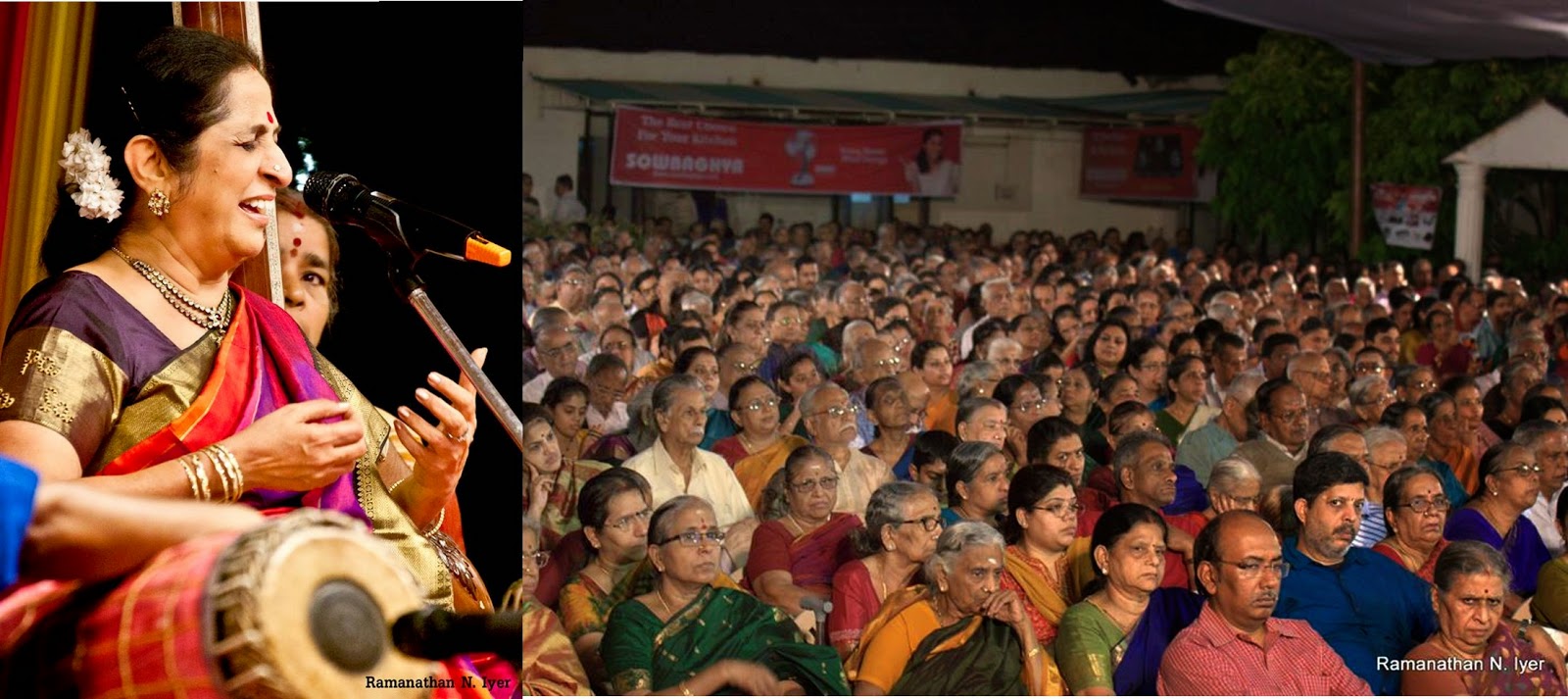Note to readers
We begin here a new series of regular blogposts by Aruna Sairam, where she will reach out to lovers of music to share her ideas, thoughts and insights. “I prepare in detail for every concert. While 80 to 90 per cent of my material is traditional, I always want every rasika to go along with me on that journey. I don’t want to leave anyone behind. I intend to do the same thing with these posts, where I want you, the reader, to have your own ‘aha moment’ as you join me in exploring Indian classical music.”
Margazhi
Music
Chennai
season is a tough task master.
Margazhi
is an enchanting season, infused with the smell of wet earth and fresh flowers,
and music and communion with the divine. It is not surprising that Lord Krishna
says in the Bhagavad Gita that among the months, He is margazhi.
And of course it is the time of the
Chennai music festival. Whenever people worry about where the Karnatic live
concert is going, all they need to do is spend a few days here to set them at
peace.
Speaking as an artiste, I can tell you
that the season is a tough task master. Expectations are very high. With every
piece each artiste hopes to gain a few inches more of stature, and it keeps us
all striving for excellence.
But the good thing is that after such
intense preparation, I can take a quantum leap with the material that I have in
my basket for the rest of the year.
I start thinking about my performances
weeks in advance. I take a piece of paper and put down the different dates and
venues, and then revisit it on a day-to-day basis, to put down things I can do for
each of the concerts. You can’t repeat your repertoire, as sometimes the same
audience may turn up for two concerts.
People have a few favourite renderings which
they want to hear again and again. But I also have to sing new pieces so that
others don’t feel like walking away saying she is singing the same thing.
This year I am doing seven concerts, most
of them within the Mylapore-Mandavalli area and within a short period of time.
Each venue has its own identity, and its
own listener base. Each group has its own way of approaching a concert,
listening to it, appreciating it, dissecting it and critiquing it. They are all
different from each other, right down to where they nod, and where they smile,
and at what point of the krithi or alapanam they give an appreciate tsk!
Take the Music Academy, Narada Gana
Sabha and Mylapore Fine Arts. (Please
click here for actual schedules
and venues. I am not singing at MFA this year).
These three venues are within 1 to 1.5 km apart, all in Mylapore.
The Music Academy has a strong academic
orientation. In its morning lec-dems and technical sessions, every raga and
every nuance of a rendition is discussed thread bare. Music is argued, minuted
and put down in journals. It’s like a vidwat
sabha. And when I go there to give my evening performance, this is very
much on my mind.
When I come to the Narada Gana Sabha,
located on TTK Road, I remind myself that it has a strong bhajana sampradaya. Mylapore
Fine Arts, on the other hand, is a partially open structure, and the atmosphere
is easy. Here, tickets are slightly easier to come by, and you find an eclectic
crowd.
But wherever you go, the excitement and
enthusiasm is undimmed, and the atmosphere is like no music festival anywhere
in the world.
I once got a call at 5 am during the
peak of the Chennai music season from Shri N Murali, the president of the Music
Academy asking me and my husband Sai to rush over to see the scene outside the
Academy. I was scheduled to perform there later that day. Getting tickets here
is difficult as the Academy already has a large member base. A certain number of tickets are allocated for
guest listeners (non-members) on the morning of the performance. Serpentine
queues led outside the Academy with the first person having arrived at 4 am to
take his position at the head of the queue. To me it was a revelation.
Two of my concerts are for the Margazhi Maha Utsavam at the Hare Krishna Centre, Thiruvanmiyur and
the Margazhi Utsavam-Jaya TV at Chettinad Vidyashram.
If I am singing at the Chettinad
Vidyashram, it means going for a sound check in the afternoon, and arranging
for coffee for people who have been waiting there since 10.30 a.m.
When I am on stage, these
very rasikas are in front of me, occupying every inch of
space, in front of chairs, squatting on the
floor…
Like any artiste, I feel
that compulsion to respond to this spirit in like fashion, giving of the best
of my music.
See you at the season!

